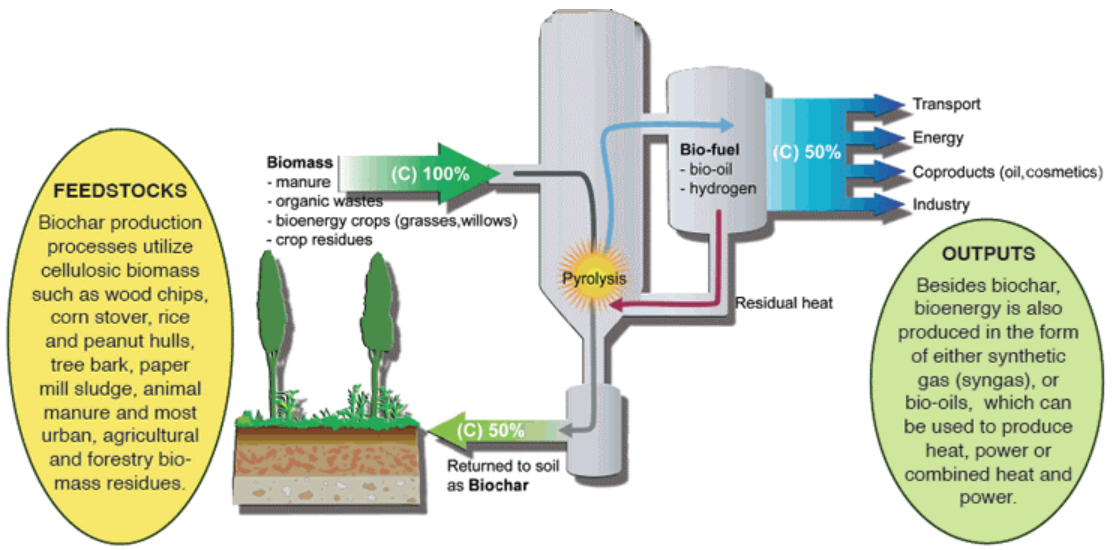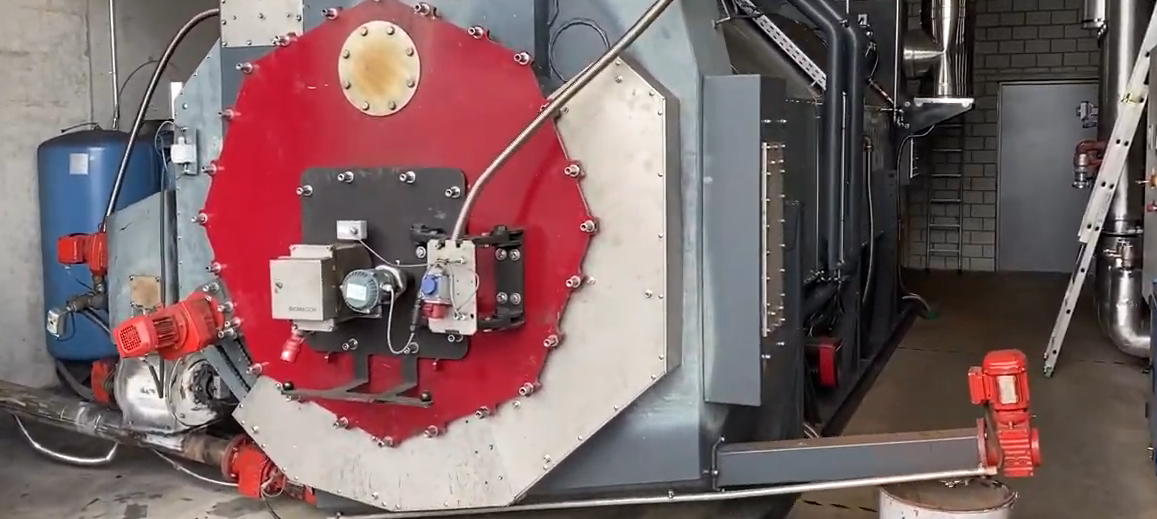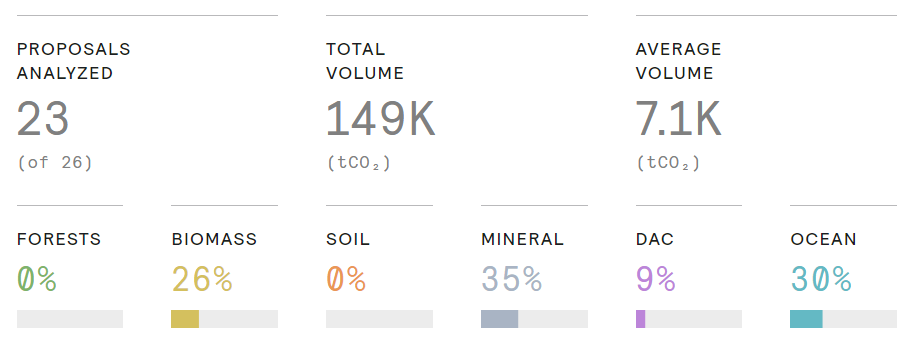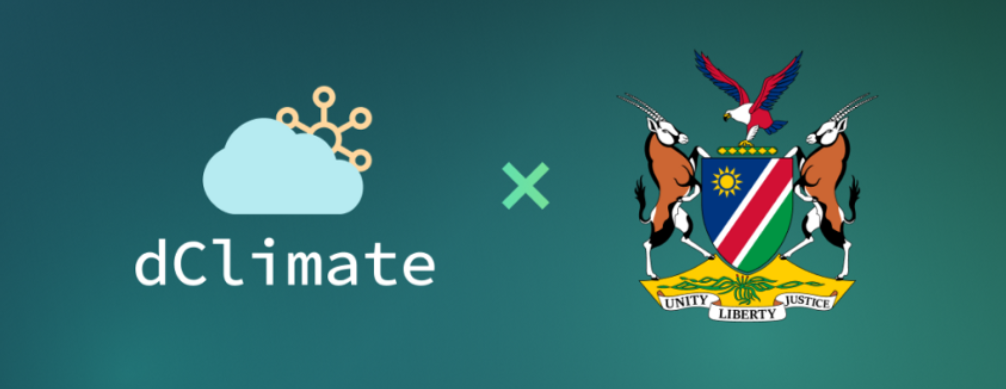deCarbonized #7: Biochar, Namibia partners with dClimate, Stripe carbon removal insights
Singapore's plan to raise carbon taxes expected to stimulate voluntary carbon market growth; CIBO Technologies announces new partnership to bring viability to regenerative agriculture credits


⛓ On-chain weekly carbon stats
Toucan Protocol is building carbon market infrastructure to finance the world's best climate solutions. These are our on-chain stats from 24.02- 02.03:
- Volume of carbon bridged - 14,758 tonnes
(Toucan’s Carbon Bridge allows anyone to bring carbon credits from legacy registries onto the Toucan Registry) - Value of carbon traded - $6,998,222
(Toucan has two carbon reference pools: Base Carbon Tonne (BCT) and Nature Carbon Tonne (NCT). This figure represents the combined $ value of all trades in the BCT pool) - Volume of carbon redeemed - 58,174 tonnes
(Anyone can redeem underlying carbon credits from the BCT or NCT pool and pay a fee to specify the specific carbon tonne that they would like) - Volume of carbon retired - 39 tonnes
(Redeemed BCT and NCT tokens can be retired and claimed as a carbon offset)

📢 Top news
- Toyota Ventures is part of $7m funding for blockchain carbon removal marketplace Nori
- Singapore's plan to raise carbon taxes expected to stimulate voluntary carbon market growth
- European Parliament postpones crypto bill vote over proof-of-work
- CIBO Technologies announces new partnership to bring viability to regenerative agriculture credits
- Private equity-backed carbon offset vendors Bluesource and Element to merge

🌟 Featured Carbon Removal Solution
Biochar
What is it?
Biochar is created by exposing biomass to high temperatures in the absence of oxygen, in a process called pyrolysis. This creates a new substance more durable to biological degradation than biomass, meaning that the organic carbon stored in its structure is returned to the atmosphere more slowly.
Biochar production can be standalone or combined with other processes, such as biofuel production, as depicted below. The biochar produced can then be returned to the soil, either in the system in which the biomass was grown or at another location.

Co-benefits of adding biochar to soil include increased crop yields, which further enhances soil quality and organic carbon content. This enables biochar application to create a positive feedback loop by increasing biomass growth and further increasing carbon removal.
Potential removal capacity
Recent estimates of biochar’s carbon removal capacity range from 1.1 to 3.3 giga tonnes of CO2 a year by 2030. More lifecycle analyses of biochar use is required to better understand this, especially around its effectiveness over long time periods.
While the technology to produce biochar is mature, commercial scale production remains in the early stages. Cost estimates vary significantly and are strongly influenced by the feedstock, application rate, production process, scale and end use of biochar. Current research indicates a cost between $96 – $1,834 per tonne of biochar, with studies on the CO2 price required for economically viable biochar varying between $30 and $120 a tonne.
More detail on biochar can be found in the CDR Primer.

✨ Innovative biochar projects
- The Future Forest Company enhances reforestation projects by applying both biochar and minerals to soil, removing ten times more CO2 than biomass alone.
- Charm uses fast pyrolyzers to change biomass into bio-oil, which is rich in carbon but low in energy content. This oil is then injected underground where in sinks and solidifies for permanent storage.
- Oregon Biochar Solutions manufacture ultra-pure biochar on an industrial scale from logging operations in the Pacific Northwest.

💵 Commercial application
Since June 2019, A-P-D (Auen care service) has been operating a small biochar pyrolysis plant in Zurich, Switzerland.
Toni Meier is a vegetable farmer and owner of the project. He obtains biomass residues from his own farming operations to produce the biochar, which he then uses on his own land and sells to farmers in the surrounding area.
Thermal energy generated during the production of the biochar is also used has part of a newly created district heating network, supplying neighbouring industrial buildings with heat.

The project is successful in demonstrating the opportunity for biochar to create a revenue stream from waste biomass, improve regional soil quality and create further benefits of sustainable energy generation.
A-P-D is a founding member of AgroCO2ncept, a wider project testing the potential for using biochar on intensively farmed agricultural soils in Switzerland.
Learn more about the A-P-D project in this short video.

🐳 Carbon whale
Piva Capital
While smaller than some of previous whales we've featured, Piva Capital's ambitions are mighty 💪 Piva has committed to offsetting all historic and future CO2 emissions using premium grade carbon avoidance and removal offsets.
- Piva has purchased 72 tonnes of offsets at a total price of $15,482
- Each credit cost an average of $209 a tonne, compared to the market average of $3
- The highest cost credit was $600 a tonne for bio-oil produced by Charm
- The lowest cost credits, at $22 a tonne, were purchased from NCX, who remove emissions via improved land management techniques
A full breakdown of Piva Capital's offsets can be found in this excellent Medium post by Julia Reichelstein.

💼 Jobs board
- Rewilding Carbon Project Developer, Rewilding Europe - Gelderland, Netherlands
- Energy Transactions Specialist, Supplier Clean Energy Program, Apple - California, US
- Front-end Software Engineer, CarbonPlan - US remote
- Head, Carbon Standards & Methodologies, First Climate - Hesse, Germany
- Carbon Strategist, Carbon Direct - Washington, US
🔎 Research in focus
Lessons from reviewing Stripe's carbon removal proposals

CarbonPlan has been building a public database of Stripe and Microsoft's carbon removal purchases since 2020. This recent article explores trends emerging from analysis of Stripe's 2021 credit procurement.
Project analysis
CarbonPlan collaborated with Stripe to design a new carbon removal application process, which asked project developers to provide more specific information about their solution. This enabled better evaluation and selection of carbon removal projects.
CarbonPlan analyzed 23 of 26 project proposals, accounting for 149,000 tonnes of CO2 with an average volume of 7,100 tonnes.

Several notable trends emerged, largely driven by Stripe’s requirement of a 1000+ year permanence of removals purchased:
- No forestry or soil projects were proposed, compared to 10 in 2020
- Project volumes were generally lower
- Cost per tonne was higher, generally shifting from the $10- $100 to the $100- $1000 bracket

Ongoing innovation
The analysis also revealed the presence of more experimental solutions amongst applicants, meaning that exact price and volume estimates were often hard to quantify.
This findings demonstrate that project application and funding structures could be better tailored to early-stage projects, for example containing more open-ended application criteria.
Rise of ocean removal projects
Of the 26 proposals analyzed, seven interacted directly with the ocean (compared to to just one of 24 proposals in 2020).
These represented novel projects for which permanence was more difficult to calculate. While ocean solutions can store CO2 for longer than land-based biochar or soil removal projects they are not as stable as geological solutions such as mineralization, with a greater risk of CO2 re-entering the atmosphere.
These uncertainties imply a need for ongoing research into ocean carbon removal to ensure that removal effectiveness matches the demand for deployment.
The full article is available here. Checkout the other excellent pieces of work by CarbonPlan including their opensource CDR database and research pieces.
Hot on Blockchain 🌳
dClimate partners with Namibia to quantify and monetize green hydrogen projects

This week dClimate, a decentralized network for collecting, distributing and analyzing climate data, announced a partnership with the Republic of Namibia.
As part of this partnership, dClimate will establish a blockchain based registry and verification system for quantifying the country’s carbon sequestration, carbon emissions and carbon credits from green hydrogen projects within Namibia.
Namibia has been recognized as a leader in green hydrogen over recent years. In late 2021, the country announced a $9.4 billion project aiming to produce 300,000 tons of green hydrogen annually.
This partnership represents one of the first direct collaborations between a blockchain project and a sovereign nation, potentially revealing the potential of blockchain to support accelerated global climate action!
Read the full press release here.
Thank you for reading deCarbonized! 👏
And special thanks to those who gave us feedback in February’s survey 🙏 We are drawing on it to improve deCarbonized already, and planning more features for the future with your needs in mind.
We said that we would offset 10 tonnes of nature-based carbon and issue a certificate to one random prize winner - but we didn't collect names in the survey 🙃
We will therefore be offsetting 23 tonnes of nature-based carbon- 1 tonne in honour of each survey participant 💃
Reach out to us on social and join the community ✨
Toucan is building the technology to bring the world's supply of carbon credits onto energy-efficient blockchains and turn them into tokens that anyone can use. This paves the way for a more efficient and scalable global carbon market.

